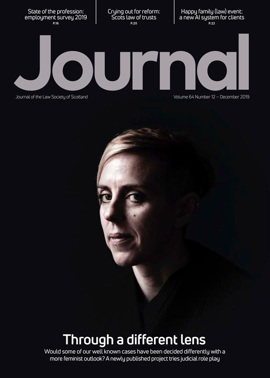Inventor compensation: no one is too big to pay
The UK Supreme Court has awarded £2 million in compensation to a UK inventor for an invention he created almost 40 years ago during the term of his employment. This decision brings to an end the 13-year legal battle between Unilever plc and inventor Professor Shanks.
Shanks was employed by a subsidiary of Unilever, Unilever UK Central Resources Ltd (“CRL”). Outside his working hours, and at home, Shanks used slides from his daughter’s toy microscope kit and created the first prototype of an electrochemical capillary fill device (“ECFD”), which is now used extensively by diabetics for the purposes of monitoring their condition. At the time, it was accepted that the creation of this device was made in the course of Shanks’ employment and therefore the IP rights belonged to CRL. To recap, under the Patents Act 1977, inventions created by an employee during the scope of their employment will almost always belong to the employer, on the assumption that the employee’s salary and other benefits will compensate for this. Unilever subsequently filed patents for the ECFD and generated £24.55 million in earnings.
Shanks decided to bring a claim for compensation under s 40 of the Act, which allows for additional compensation to be awarded to an employee inventor, if a patent proves to be of “outstanding benefit”. In such circumstances, the employee may be entitled to a “fair share” of the benefit that the employer has received.
Shanks’ claim was rejected at first instance on the basis that £24.55 million is not an outstanding amount in comparison with Unilever’s normal business activities. After numerous appeals, the question came to the Supreme Court for consideration.
The ruling
The court had two questions before it: (1) what amounts to an “outstanding benefit”; and (2) how should the “fair share” of such a benefit be assessed?
On the first point, part of Unilever’s submissions was that the remuneration derived from the patent was insignificant in terms of the group’s overall earnings. It is true that £24.55 million is just a small portion of Unilever’s overall profits. However, Shanks’ counter argument was that this analysis characterised Unilever as “too big to pay”. The courts conducted their analysis based on turnover and profits obtained by Unilever as a whole, including its business in the production of cleaning agents, beauty products and food products. Shanks maintained that if such argument was accepted, it would be almost impossible for any employee to establish a benefit from a patent as outstanding.
In its ruling ([2019] UKSC 45 (23 October 2019)) the court recognised the dramatic requirements to achieve an “outstanding benefit” status in a company such as Unilever plc, and instead adopted an approach that compared the benefit derived from Shanks’ patent with the benefits from other patents filed and licensed by Unilever. Upholding Shanks’ appeal, the court acknowledged that ECFD had had a significant impact on Unilever’s profits in comparison with other patent inventions licensed out by the company. It reaffirmed that the assessment of “outstanding benefit” should not render an employer “too big to pay”.
On the second point, the court had to assess the “fair share” owed to Shanks. At first instance, this calculation was assessed at 5%, subsequently reduced to 3% during the appeal process. However, the Supreme Court held that time value of money ought to be considered when quantifying the amount owed to Shanks and reinstated the 5% figure, awarding him a sum of around £2 million in compensation.
Commentary
The Shanks ruling marks a significant change to the assessment of compensation in terms of employee inventors. The test for s 40 of the Act remains: an invention must have an “outstanding benefit” on the company in order for an employee inventor to receive compensation. What has changed, however, is the court’s acceptance of using the benefit of other patents within the company as a comparator to determine whether the patent in question could achieve an “outstanding” status. Previous interpretation would have determined the impact of a patent based on a company’s entire overall profitability, which arguably meant that the bigger and more successful the company, the harder it would be for an inventor to meet this test.
This is certainly an interesting decision, but it is unlikely that the case will open the floodgates to employee-inventor claims.
The bar to achieve the status of an “outstanding benefit” has been lowered, but it is still a difficult standard to reach.







